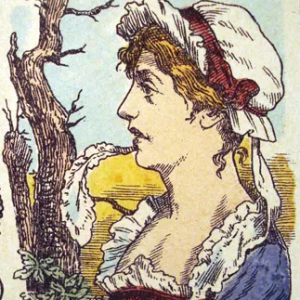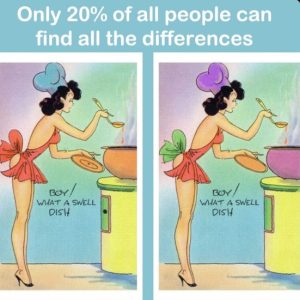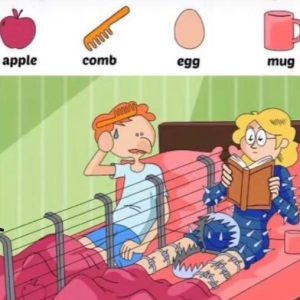Let’s be honest — there’s something incredibly satisfying about finding that one tiny difference others miss. Whether it’s a misplaced flower, a flipped shadow, or an extra ripple on the water, spot-the-difference puzzles grab our attention in the best way. They’re simple, nostalgic, and sneakily challenging — and that’s exactly why people of all ages keep coming back for more.
These puzzles aren’t just fun. They work our brains in subtle but powerful ways. And the best part? They require nothing more than your eyes, your patience, and a love for the little things most people overlook.
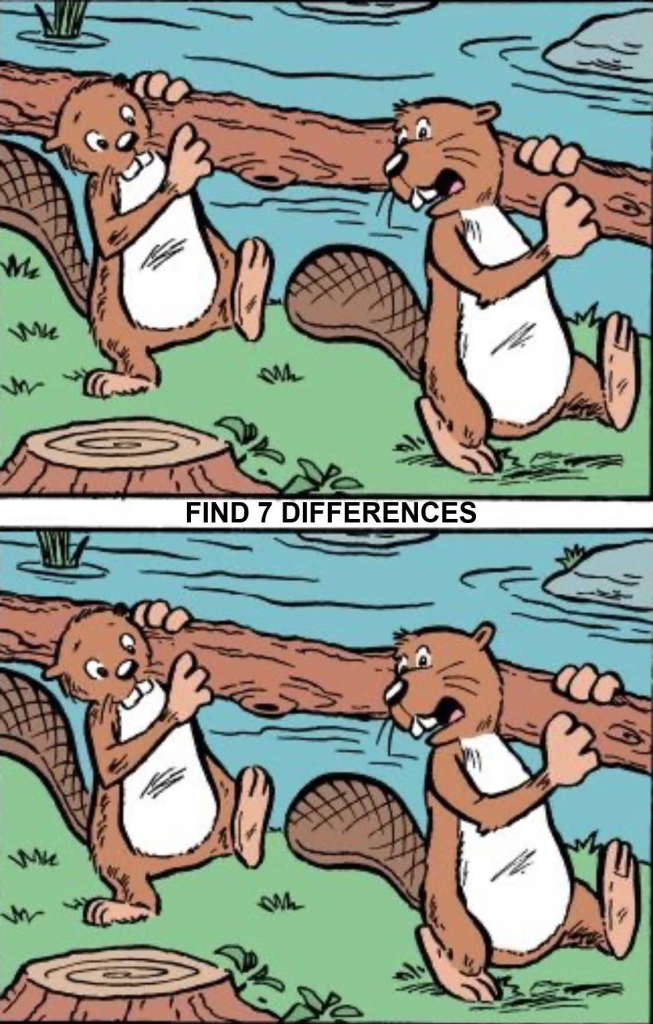
A Calm Scene, A Hidden Challenge
In our latest puzzle, two adorable beavers are lounging by a peaceful lake. At first glance, the image feels serene — like something you’d see on a nature postcard. Calm water, soft greenery, lazy wildlife. But look a little closer, and you’ll find that this scene is anything but identical.
Your mission: spot seven differences between the two versions of this lakeside scene. It sounds easy, right? But don’t get too confident — the changes are sneakily subtle.
Video: Can you spot the differences?
What Makes These Puzzles So Addictive
Here’s the thing: our brains are wired to recognize patterns. When we see two similar images, we assume they’re the same — unless we’re told otherwise. Spot-the-difference puzzles mess with that instinct in the most delightful way.
They force us to slow down, to really see. And in a world filled with fast-scrolling content, taking a mindful moment to focus on something small feels like a breath of fresh air.
These puzzles give us a sense of control — like we’re detectives with a magnifying glass, unraveling a miniature mystery. Plus, who doesn’t love the “aha!” moment when you finally catch what’s off?
How to Approach the Puzzle Like a Pro
If you’re staring at those beavers and not seeing anything different yet — don’t worry. Most people miss something on their first pass. Try this method:
- Divide the image into sections (top left, bottom right, etc.).
- Compare one quadrant at a time so you don’t overlook the details.
- Zoom in on small features like tails, ripples, leaves, and shadows.
- Check for symmetry, color differences, or missing objects.
It’s not just about what’s there — it’s also about what’s not. Empty space where something should be is often the biggest clue.
Let’s Reveal the Seven Differences
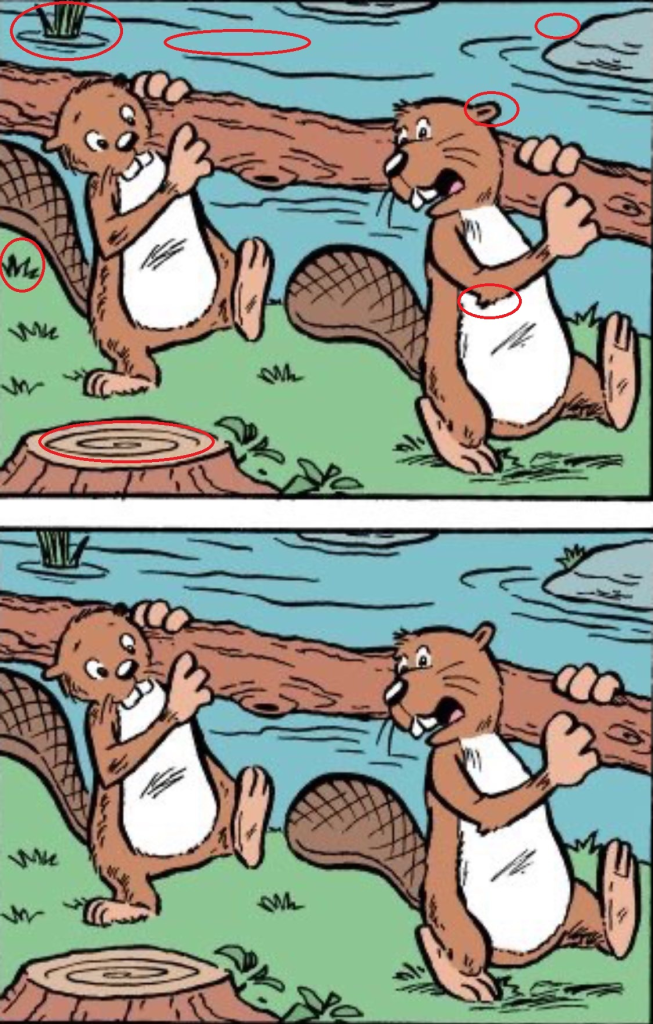
Still searching? Or want to check your answers? Here’s what makes these two beaver scenes not quite the same:
- Floating Grass Patch
In the upper left of the lake, one image has a small patch of grass drifting on the water — the other doesn’t. - Ripple by the Log
Near the log where the beavers rest, there’s a curvy ripple in one image that’s completely missing in the other. - Circular Water Ripple
To the right of the rocks, one picture features a distinct round ripple on the water’s surface. It’s gone in the second version. - Right Beaver’s Ear
Take a close look at the ear on the right-hand beaver. In one image, it has more inner detail than the other. - White Patch on Beaver’s Underside
There’s a small white spot on the belly of the right beaver in one scene — it disappears in the other. - Grass Under Left Beaver
Beneath the left beaver’s tail, there’s a tuft of grass in one picture that’s missing in the other. It’s an easy one to miss! - Wood Grain on Log
On the chopped end of the log in the bottom left corner, the inner rings of the wood are clearly drawn in one image — they’re faded or missing in the other.
Each of these differences is a little love letter to detail. They don’t scream. They whisper. And spotting them means you’ve got the kind of focus that most people overlook.
Why Spot-the-Difference Is a Brain Workout in Disguise
Video: Can You Solve These 60 Tricky Riddles?
While these puzzles feel lighthearted, there’s some serious cognitive firepower behind them. Every time you search for a visual difference, you’re sharpening:
- Attention to detail
- Pattern recognition
- Short-term memory
- Patience and focus
It’s a mini mental workout — kind of like yoga for your eyes and brain. Plus, it’s screen time that actually improves your concentration instead of frying it.
Conclusion: Small Differences, Big Satisfaction
Spot-the-difference puzzles are proof that you don’t need flashy graphics or complicated rules to be hooked. Sometimes, all it takes is two pictures and a curious eye to create a moment of magic.
Whether you found all seven differences or had to peek at the answers, you exercised your brain, slowed down your day, and enjoyed a tiny slice of peace.
So next time someone says they “don’t have time” for puzzles, just show them a beaver, a log, and a ripple — and let the spotting begin.
